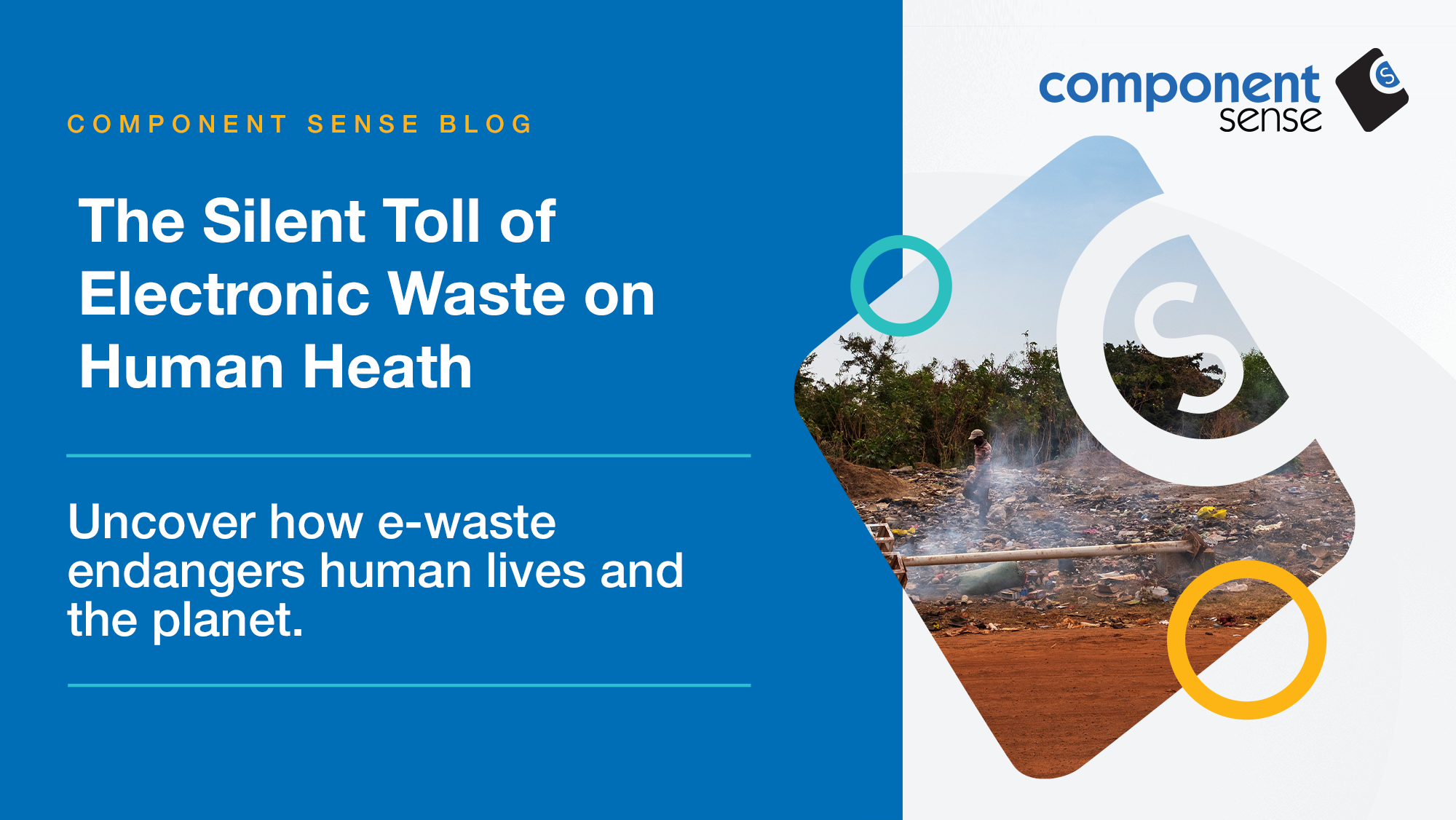The Silent Toll of E-Waste on Human Health

As dawn breaks, a Ghanaian man emerges from his workshed. His skin, soot-stained from years of exposure to fumes, is tainted with scars, lacerations, and abrasions. Instead of being greeted with crisp morning air, he is engulfed in thick black smoke from burning electronic waste (e-waste).
In the distance, towers of e-waste loom over his hometown, foretelling yet another gruelling day of labour.
(Source: O76)
On the outskirts of Accra, the vibrant capital of Ghana, lies a commercial district home to the world’s largest electronic waste site, Agbogbloshie. This commercial district is divided into two main areas: the first region is used to offload, sort, collect, and trade e-waste, while the second region—located at the edge of the Odaw River—is used to burn plastic off electronic wires and coils to retrieve precious metals to sell.
During informal e-waste recycling activities, workers are directly exposed to a range of hazardous substances. A study by the University of Michigan uncovered alarmingly high levels of cadmium, lead, and arsenic in the urine and blood of individuals involved in the burning of e-waste. These heavy metals are not just environmental pollutants; they pose a threat to human health, with studies linking these materials to a 15% to 85% increased risk of stroke and heart disease.
Impact on Local Communities
Across the Odaw River, a mere stone’s skip away, is a residential community teeming with children, expectant mothers, and the elderly. They, too, are exposed to these toxins, with children being the most vulnerable demographic.
Due to their smaller size, children absorb these toxins and expel them from their bodies at a slower rate than an average adult. Lead poisoning, for example, is linked to intellectual abnormalities and neurobehavioral impairments in children. These harmful toxicants can cause irreparable damage to youth’s developing systems and affect them throughout the rest of their lives.
Kwabena Labobe, aged 10, wandered around Agbogbloshie; his parents could not send him to school (courtesy of Kevin McElvaney, 2014).
In some countries, children are used as cheap labour; their tiny hands are seen as advantageous in dismantling the smallest electronics, all while toxic pollutants pervade their little bodies.
For pregnant women, e-waste exposure has been associated with an increased risk of stillbirth and premature birth. Toxins can also cross the placenta and contaminate breast milk.
Besides the direct human health risks these toxins impose, they also contaminate the environment through the air, water, soil, and food chain. A study reports that an egg from a free-range chicken in Agbogbloshie exceeds the European Food Safety Authority for chlorinated dioxins by 220 times the daily intake.
Ghana is sent tonnes of e-waste every year deceitfully labelled as “repairable”. The mountains of e-waste begin to pile up and are left to seep into the ground for many years to come, poisoning all terrestrial species.
“It’s your waste, so don’t just ship your waste to us and tell us that, ‘It’s secondhand, you can use it.’”
—Vincent Kyere, a PhD who has been studying e-waste at Agbogbloshie for over a decade
Despite its negative implications, the e-waste crisis is a largely overlooked global issue. However, electronic manufacturers can make a substantial difference by making sustainable choices. We can take proactive measures to ensure the responsible recycling of discarded electronics. Companies can reject excessive consumerism by postponing the purchase of unnecessary electronic devices.
How Component Sense Addresses E-Waste
At Component Sense, we address e-waste at its source through our zero-waste approach. Our business strives to reduce waste from the outset, reducing the need for disposal and recycling. We redistribute brand-new, never-used excess and obsolete (E&O) components that would otherwise be disposed of, expanding their lifespan.
Additionally, Component Sense plants two trees for every order, reduces freight-related carbon emissions with our DSV partnership, and has redistributed over 31 million electronic parts. To learn more about our sustainability efforts, read our Waste Manifesto.
Everyone can make a difference by adopting more sustainable practices. Will you do your part?